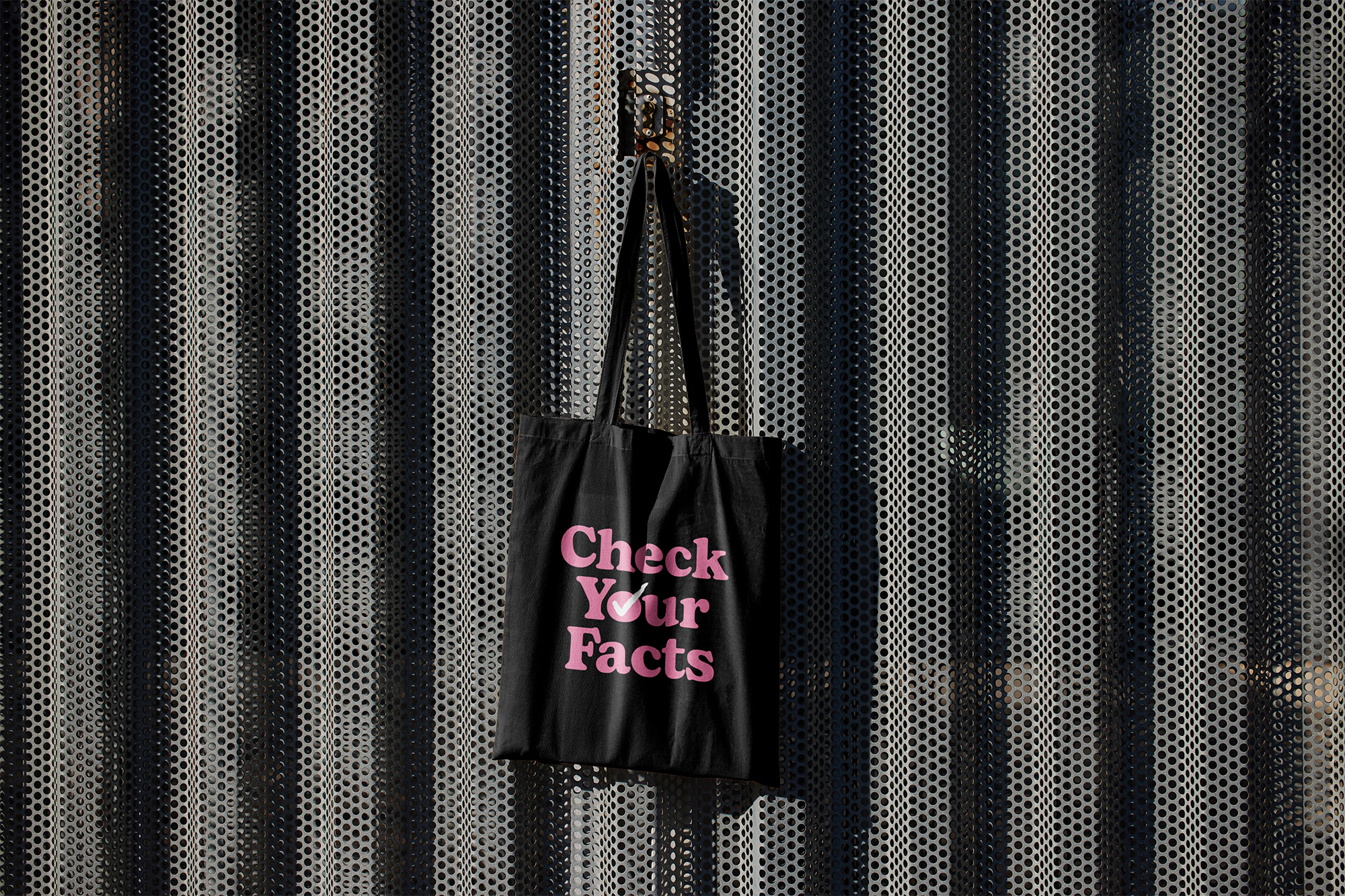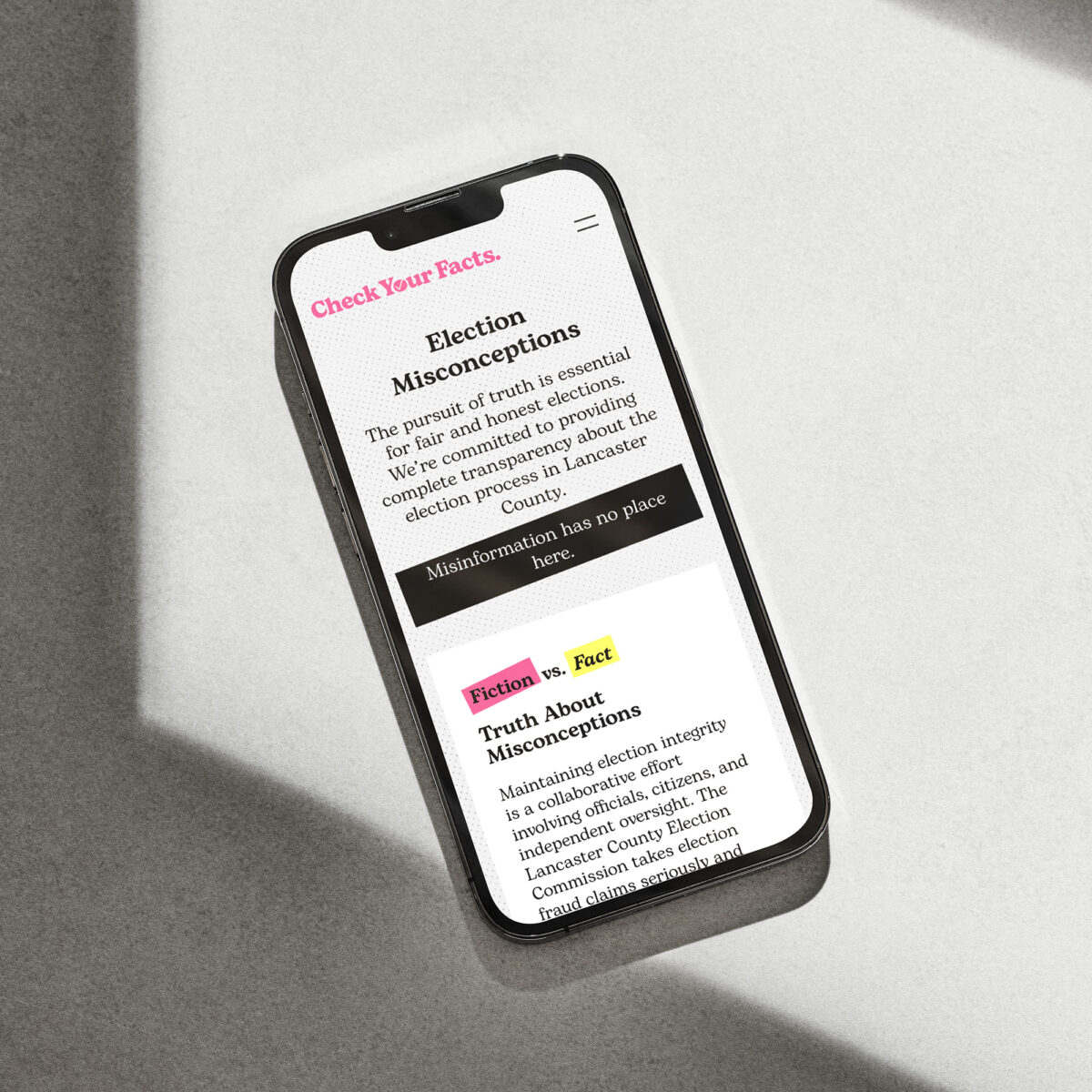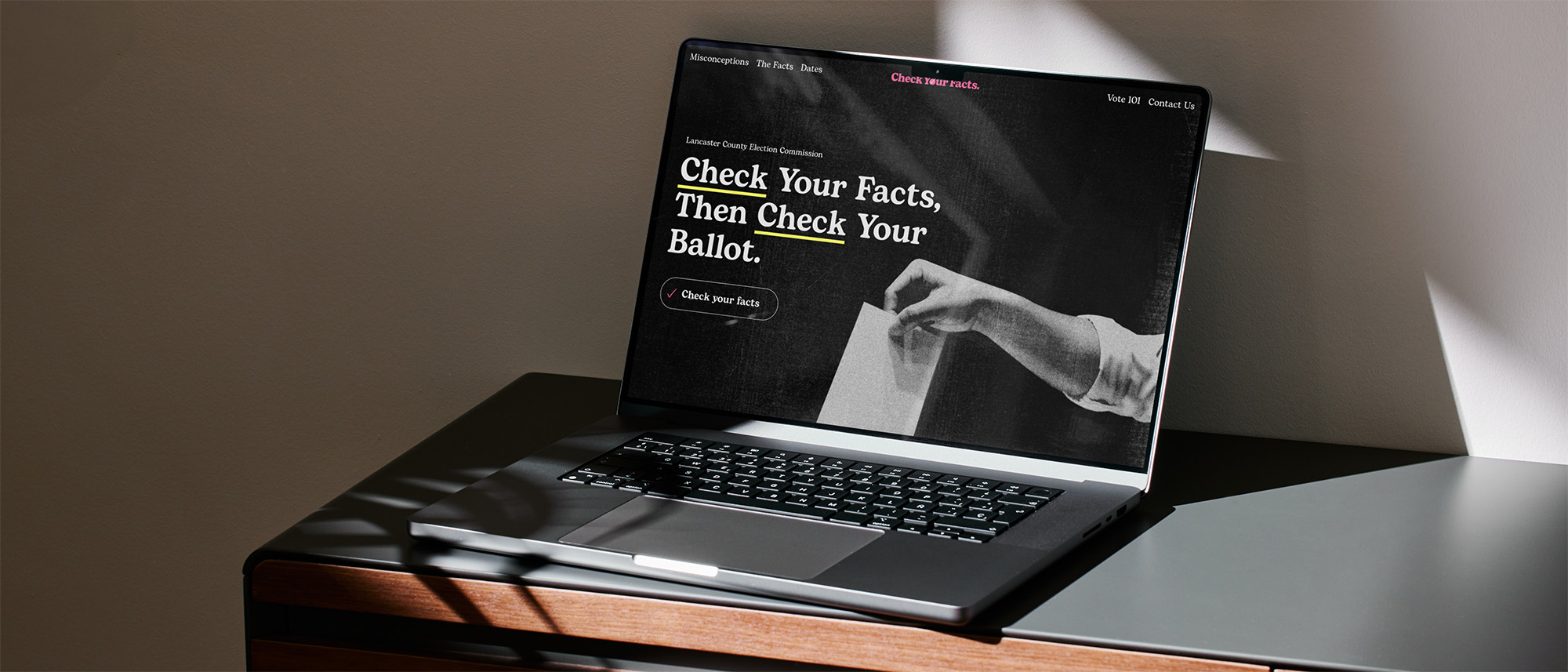The Lancaster County Election Commission, responsible for safe and secure elections, faced an uphill battle. Every day, staff heard from residents who doubted the election process, questioned the commission’s integrity, and cast suspicion on the elections themselves. The facts were clear. Lancaster County’s elections were secure. The challenge was how to restore public trust and reassure voters.
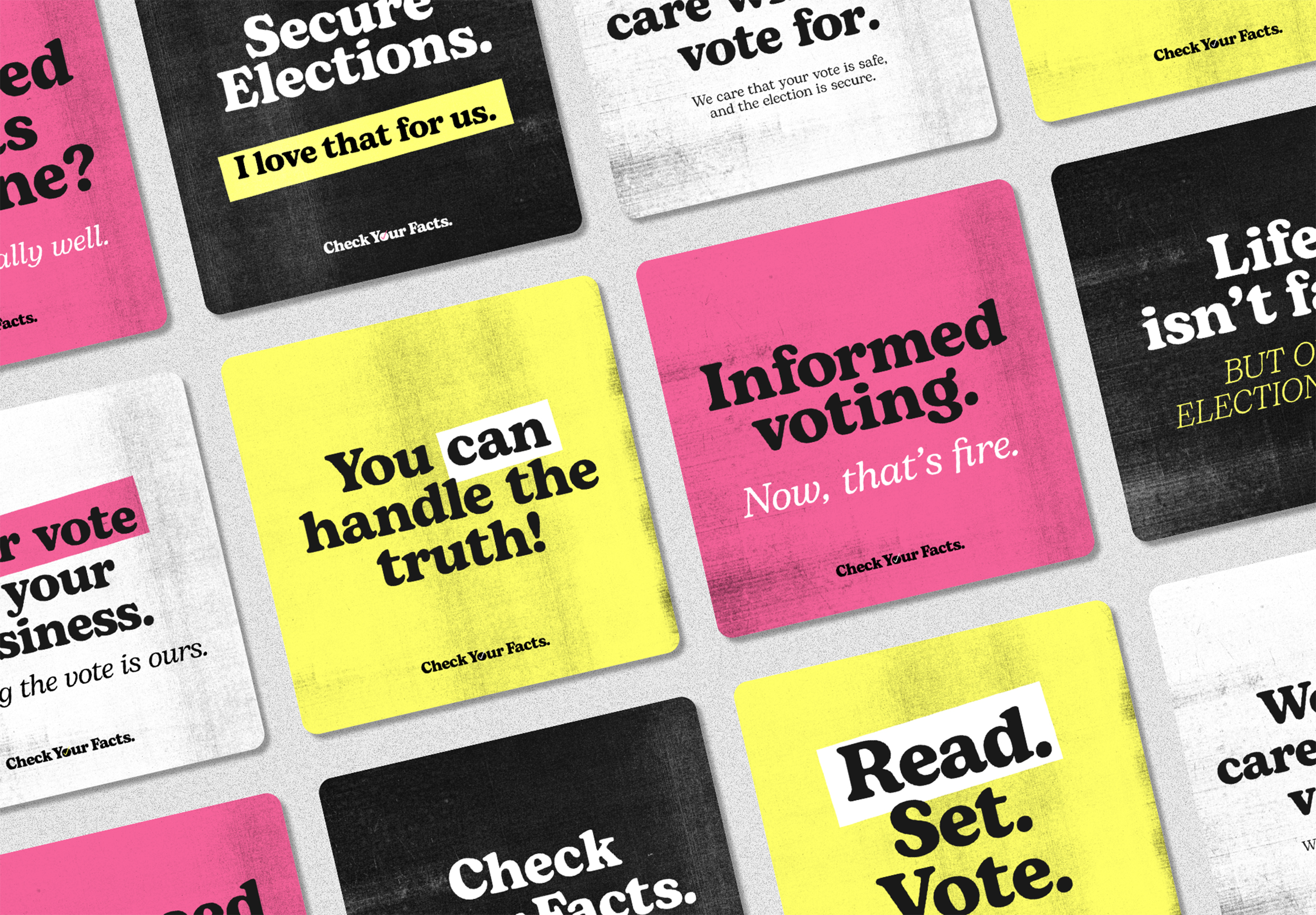

01
The Challenge
The Lancaster County Election Commission approached us with a clear mission: gain back the trust of voters with the facts. We knew we needed to create a trusted online space where residents could find factual, easy-to-understand information about the county’s electoral process. Our audience included roughly 206,000 voting-age residents—people seeking clarity amid confusion and those vulnerable to misinformation. The goal was to make truth more accessible. And the timeline? Three months before the election. Our focus became building something honest, approachable, and rooted in facts. It would be a digital home for these facts that felt as credible as the institution behind them, and a digital strategy for driving traffic there.


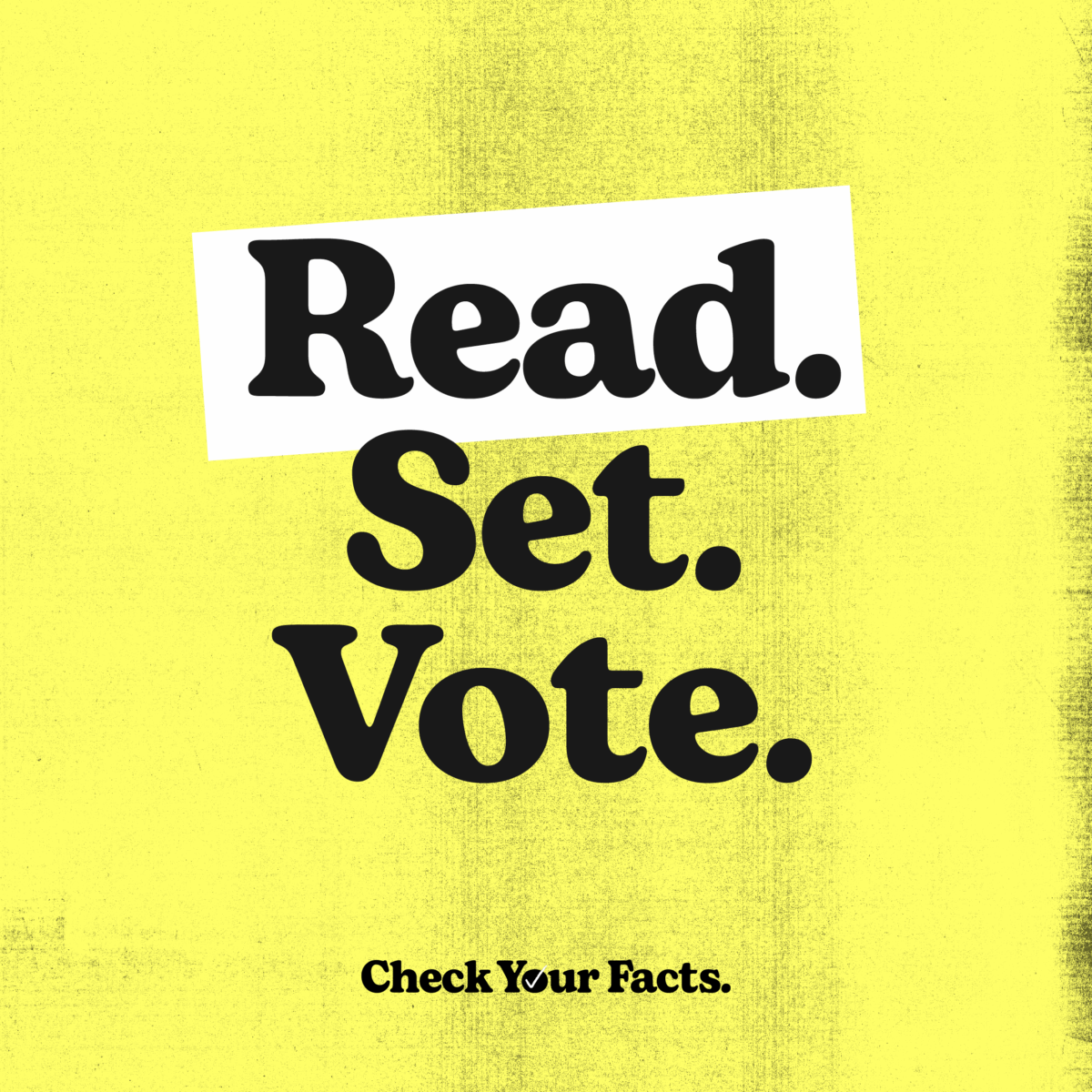
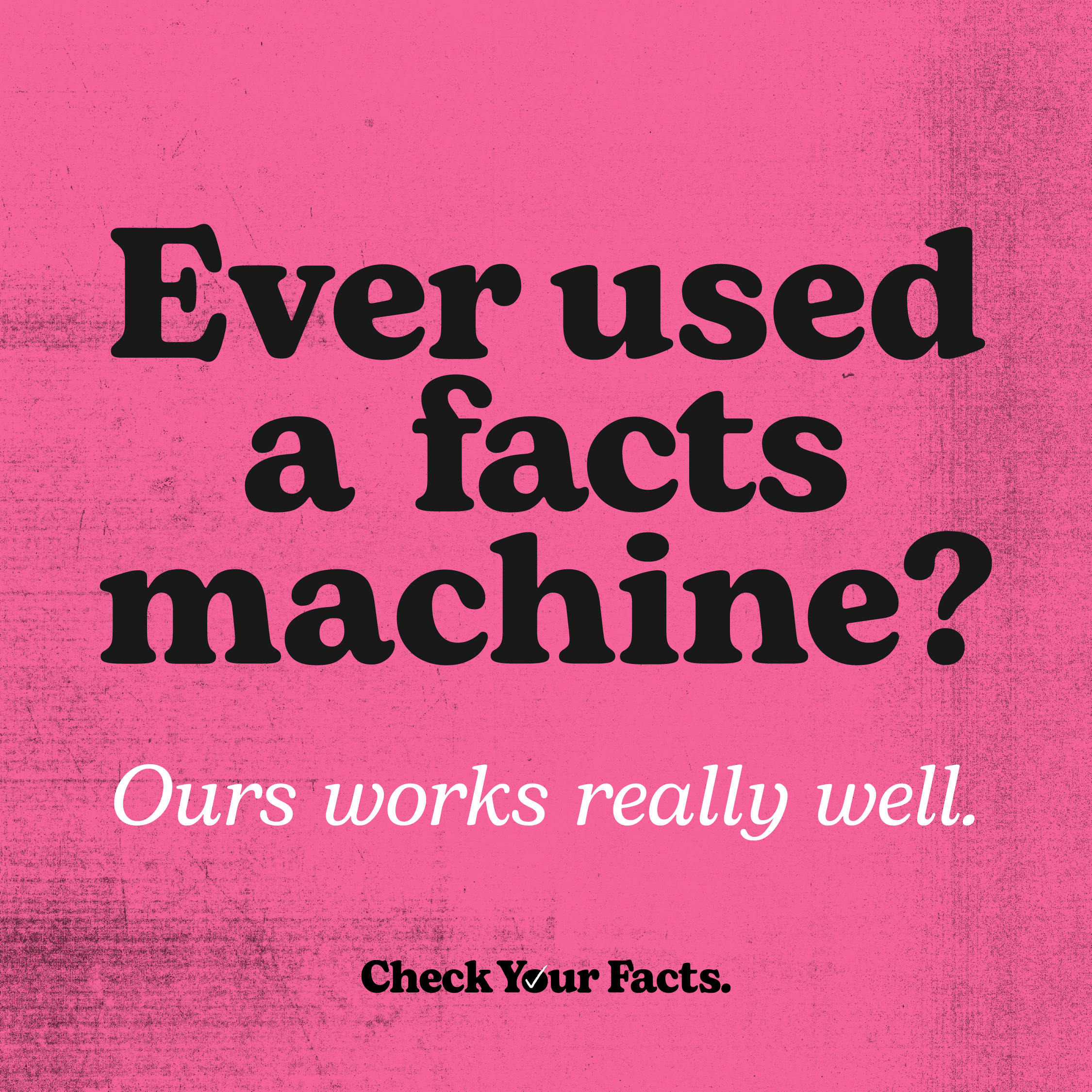

02
The Solution
We designed a dynamic microsite, check-facts.com, to serve as a lasting, go-to resource for Lancaster County voters. Built for accessibility and trust, the site combines vibrant design with clear, straightforward language to cut through online noise. To help diffuse the tension surrounding election-related content, we crafted ad copy that introduced humor into the social media landscape. Campaign visuals on Meta platforms featured phrases like “You CAN handle the truth,” “Secure elections. I love that for us,” and “Life’s not fair. But our elections are.” Set in a color palette inspired by classic carbon copy, triplicate paper—white, yellow, and pink—with subtle photocopier textures, the visuals felt cheeky, clever, and unmistakably nonpartisan.


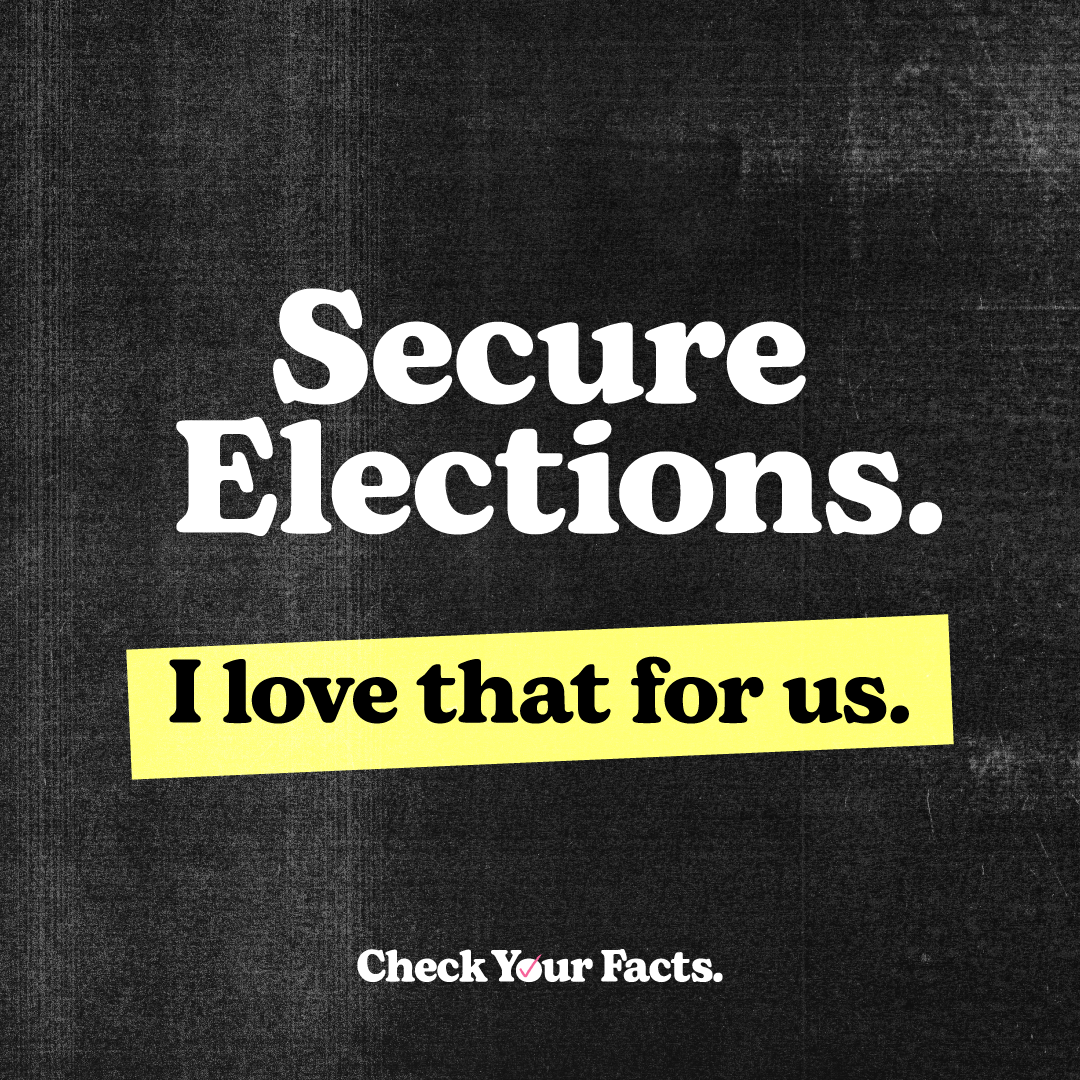

03
The Outcome
The campaign produced phenomenal results. In two months, it reached more than 150,000 residents—over half the county’s voting population—and generated nearly one million impressions. This campaign got people talking and sharing. More importantly, we got the public checking facts with renewed trust and a better understanding of the voting process.
